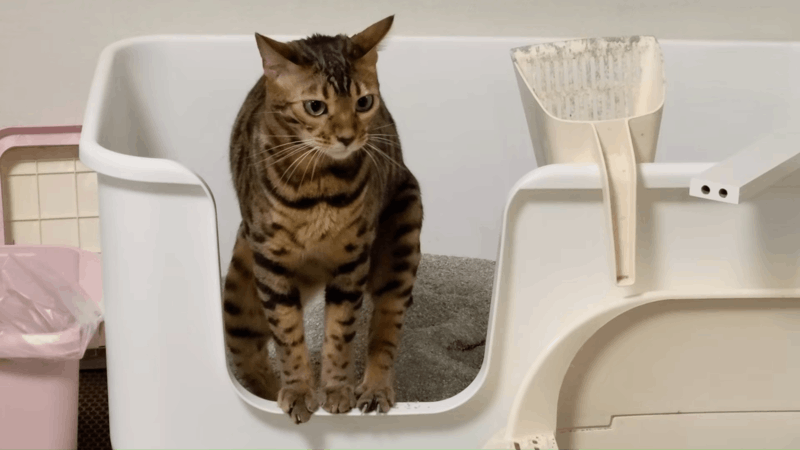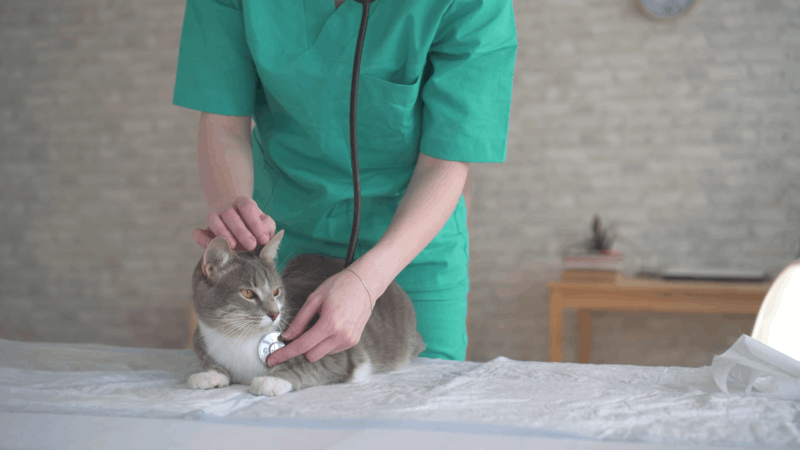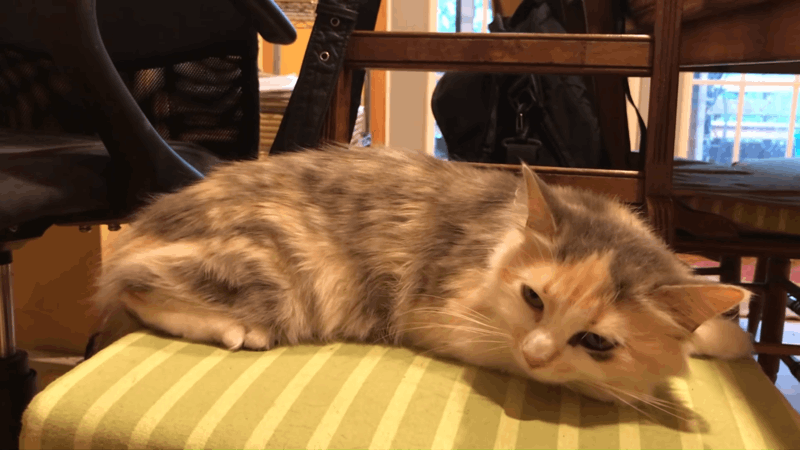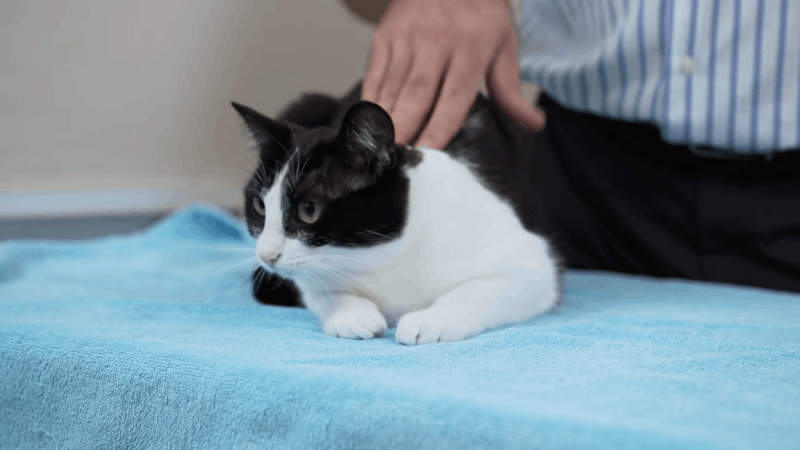No products in the cart.
Cat diabetic neuropathy is a condition that affects cats with diabetes, causing nerve damage and potentially impacting their mobility and well-being. This complication arises from prolonged exposure to high blood sugar levels, which gradually harm the nerves. While the exact mechanisms behind cat diabetic neuropathy are still being studied, it is believed that factors like the accumulation of sorbitol within nerve cells, oxidative stress, and inflammation play a role. Understanding cat diabetic neuropathy is important for cat owners and veterinarians to provide proper care and management.
In this blog, we will uncover the signs of diabetic neuropathy in cats, is diabetic neuropathy in cats painful, does CBD help with diabetes in cats, and the potential benefits of the best CBD oil for cats to help address this condition and enhance the quality of life for our furry friends.
Cat Diabetic Neuropathy
Cat diabetic neuropathy occurs when cats with diabetes develop nerve damage. It’s a common complication that can affect their overall well-being and mobility. Diabetes in cats can result in neuropathy because the disease’s high blood sugar levels gradually harm the nerves.

Causes of Cat Diabetic Neuropathy
The main cause of cat diabetic neuropathy is prolonged exposure to high blood sugar levels, which happens in cats with diabetes. Peripheral nerve injury can result from increased blood glucose levels that persist for a long time. This damage can then result in the development of neuropathy, with various symptoms and difficulties for the cat.
Mechanisms of Cat Diabetic Neuropathy
While the exact mechanisms behind cat diabetic neuropathy are not completely understood, experts believe that the accumulation of sorbitol within nerve cells plays a role. This build-up of sorbitol disrupts normal nerve function and contributes to nerve damage. The development of neuropathy in diabetic cats may also be influenced by elements including oxidative stress and inflammation.
Diabetic Neuropathy’s Relationship to Feline Diabetes
Diabetes in cats can lead to a problem called diabetic neuropathy. When cats have diabetes, their bodies struggle to regulate blood sugar levels effectively. As a result, their blood sugar remains consistently high, leading to various health issues. Neuropathy might develop as a result of the nerve damage brought on by these high glucose levels over time. Cats with poorly controlled diabetes or those with diabetes for a long time are more prone to developing neuropathy. Proper management of feline diabetes is crucial to minimizing the risk and progression of neuropathy in diabetic cats.
Signs of Diabetic Neuropathy in Cats
Cats with diabetic neuropathy might display a variety of symptoms. Typical signs of diabetic neuropathy in cats include:
- Changes in gait and posture: Cats with neuropathy may walk differently or unsteadily. They may walk on their hocks or knuckles instead of their toes. They may also have difficulty jumping or climbing stairs.
- Loss of coordination: Cats may show a lack of coordination and balance. They may stumble or have trouble maintaining their balance while moving.
- Muscle weakness: Diabetes neuropathy can cause muscle deterioration, especially in the back legs. Cats may have difficulty jumping or exhibit a general decline in overall muscle strength.
- Decreased sensation: Cats with neuropathy may experience a decreased ability to feel pain or temperature changes in their affected limbs.
- Behavioral changes: Cats in pain or discomfort may display changes in behavior. They might exhibit signs of irritation, experience a drop in appetite, or withdraw more.

Types of Cat Diabetic Neuropathy
There are primarily two types of neuropathy in cats:
- Peripheral neuropathy: This is the most common form of neuropathy in diabetic cats. Peripheral neuropathy affects the nerves in the cat’s limbs, typically starting with the hind legs and progressing to the front legs. It can cause weakness, muscle wasting, and difficulty walking.
- Autonomic neuropathy: Autonomic neuropathy affects the nerves that control involuntary bodily functions. Constipation or diarrhea, urinary difficulties, and alterations in heart rate or blood pressure can all occur in diabetic cats.
The Effect of Diabetic Neuropathy on Cats
Diabetic neuropathy can have significant effects on cats. Here are some of the impacts it can have on their well-being:
- Mobility limitations: Diabetic neuropathy can induce nerve loss that makes it difficult to walk, climb, or leap. Cats may experience weakness or loss of coordination, making it challenging for them to move around comfortably.
- Muscle wasting: Over time, diabetic neuropathy can result in muscle deterioration, particularly in the hind limbs. This can lead to muscle weakness and a decline in overall strength, further impairing a cat’s mobility.
- Pain and discomfort: Diabetic neuropathy can cause pain, tingling, or a burning sensation in the affected areas. Cats may exhibit signs of discomfort, such as increased vocalization, reluctance to be touched, or changes in behavior.
- Secondary complications: Cats with diabetic neuropathy may be more prone to developing secondary complications. Reduced mobility and sensation can increase the risk of skin infections, pressure sores, or injuries that may be slow to heal.
- Impact on quality of life: The combination of mobility limitations, pain, and potential secondary complications can significantly impact a cat’s overall quality of life. They may become less active, withdraw from normal activities, or experience changes in appetite and behavior.
Is Diabetic Neuropathy in Cats Painful?
Yes, diabetic neuropathy in cats can be painful. Neuropathic pain refers to pain that arises from damage or dysfunction of the nerves themselves. The nerve damage brought on by persistently high blood sugar levels in diabetic neuropathy can induce neuropathic pain in cats.
- Cats with diabetic neuropathy may experience neuropathic pain due to nerve damage brought on by persistently high blood sugar levels. However, signs that may indicate pain in cats with diabetic neuropathy include:
- Vocalization: Cats may vocalize more frequently or exhibit increased meowing or groaning, indicating discomfort or pain.
- Changes in behavior: Cats in pain may show changes in their behavior, such as decreased activity, restlessness, or irritability.
- Altered eating habits: Cats experiencing pain may have a decreased appetite or show reluctance to eat.
- Avoidance of touch or movement: Cats may avoid being touched or become sensitive when their affected limbs or areas of neuropathy are handled.
- Changes in posture or gait: Cats with diabetic neuropathy may have an abnormal or unsteady gait, exhibit difficulty walking, or adopt unusual postures to alleviate pain.

CBD and Diabetic Neuropathy in Cats
The role of CBD (cannabidiol) in directly treating diabetic neuropathy in cats is not yet well-established. While CBD has shown promise in various areas of veterinary medicine, its specific effects on diabetes management in cats have not been extensively studied. It is important to consult with a veterinarian for guidance on the appropriate treatment options and management strategies for feline diabetic neuropathy.

CBD’s Potential Benefits for Cat Diabetic Neuropathy
While the specific effects of CBD on diabetic neuropathy in cats are not well-documented, some potential benefits of CBD in veterinary medicine that may have relevance to cats with diabetic neuropathy include:
- Pain management: CBD has shown promise as a natural pain reliever in animals, and it may potentially help alleviate pain associated with diabetic neuropathy in cats.
- Anti-inflammatory properties: CBD has demonstrated anti-inflammatory effects in animal studies, which could be beneficial for managing inflammation associated with diabetic neuropathy.
- Anxiety and stress reduction: CBD has been used to help reduce anxiety and stress in animals, which may benefit cats experiencing discomfort or distress due to diabetic neuropathy.
- Overall well-being: CBD may contribute to an improved sense of well-being and overall quality of life in cats with diabetic neuropathy, although more research is needed to determine its specific effects.
Side Effects of CBD on Cat Diabetic Neuropathy
While CBD has shown potential benefits in veterinary medicine, its specific effects on cat diabetic neuropathy have not been extensively studied. Some potential side effects of CBD in general, regardless of the condition being treated, may include:
- Some potential side effects of CBD in general, regardless of the condition being treated, may include:
- Sedation: CBD can have a calming effect on animals, which may result in drowsiness or sedation.
- Dry Mouth: CBD can reduce saliva production, leading to increased thirst and dryness in the mouth.
- Changes in Appetite: CBD may impact a cat’s appetite, causing increased or decreased hunger.
- Potential Drug Interactions: CBD may interact with certain medications, including those used to manage diabetes or other conditions. It is crucial to consult with a veterinarian to ensure CBD does not interfere with existing treatments.
- Variability in Quality: The quality and consistency of CBD products can vary, making it essential to source CBD from reputable manufacturers and follow proper dosage guidelines.
The Potential of CBD as a Therapy for Cat Diabetic Neuropathy
The potential use of CBD as a therapy for cat diabetic neuropathy is an area that requires further research. While CBD has shown promise in other areas of veterinary medicine, its specific effectiveness and safety for treating cat diabetes neuropathy have not been extensively studied. Consulting with a veterinarian is crucial to assessing the individual cat’s needs and determining the most appropriate treatment options for managing diabetic neuropathy.
Conclusion
Cat diabetic neuropathy, a common complication that occurs when cats with diabetes develop nerve damage due to prolonged exposure to high blood sugar levels, can significantly impact a cat’s well-being and mobility. This condition can cause mobility limitations, muscle wasting, pain, and a decline in overall quality of life.
While the exact mechanisms and optimal treatment approaches for cat diabetic neuropathy are still being researched, CBD (cannabidiol) has shown potential benefits in veterinary medicine for managing pain, reducing anxiety, and possessing anti-inflammatory properties. However, further research is needed to determine its specific effectiveness and safety for treating cat diabetic neuropathy.
I am Nelson Cooper, I pursue my passion for writing and my belief is that cats love humans. I enjoy traveling and have a deep appreciation for the beauty of nature, as well as a soft spot for animals, particularly cats.



